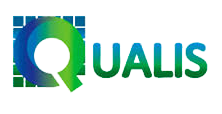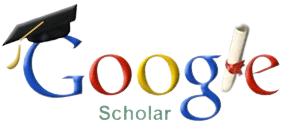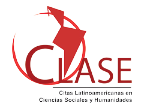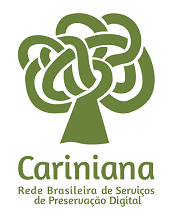Potentialities of information in tridimensional objects
DOI:
https://doi.org/10.5433/1981-8920.2022v27n1p82Keywords:
Tridimensional objects, Museum objects, Popular culture objects, Maria dos Bichos CollectionAbstract
Objective: Identify documents that potentiate with information Maria dos Bichos collection in the scope of the NUPPO collection. Many institutions that custodies material goods reduce their potential to the visual exposition, unknowing the potentialities in the transformation process in documents possible of transmitting knowledge. This way, it is questioned if it is possible to potentiate of information the tridimensional objects of popular culture, especially the ones that are part of Maria dos Bichos collection, which integrates the collection of the Nucleus in Research and Documentation of Popular Culture (NUPPO), based on possible other kinds of materiality existent in the own collection.Methodology: it is used as methodological procedure the survey of information sources about the approached theme, as well as the data collection supported in researches in the institution and in virtual environments.
Results: photographs were localized and an interview which would certainly serve as instruments for the realization of diverse activities, like expositions and researches in general.
Conclusion: Therefore, one of the actions that potentiate collections of tridimensional objects is the gathering of isolated and unknown information to associate it with other evidences that are related between them. This way, it improves meanings, significances and values, visualizes and brings life to the collection and the institution itself.
Downloads
References
BAUDRILLARD, J. O sistema dos objetos. São Paulo: Editora Perspectiva, 1993.
BRIET, S. O que é a documentação. Brasília: Briquet de Lemos Livros, 2016.
BRULON, B. Passagens da museologia: a musealização como caminho. Museologia e Patrimônio, Rio de Janeiro, v. 11, n. 2, p. 18 -210, 2018. Disponível em: http://revistamuseologiaepatrimonio.mast.br/index.php/ppgpmus/article/view/722. Acesso em: 20 jan. 2020.
BUCKLAND, M. Information as Thing. Journal of American Society for Information Science, v. 42, n. 5, p. 804-809, 1991. Disponível em: http://rfrost.people.si.umich.edu/courses/SI110/readings/misc/Buckland.pdf. Acesso em: 30 jun. 2018.
BUCKLAND, M. What is a document? Journal of American Society for Information Science, v. 48, n. 9, p. 804-809, 1997. Disponível em: http://people.ischool.berkeley.edu/~buckland/whatdoc.html. Acesso em: 30 jun. 2018.
FERREZ, H. D. Documentação Museológica: teoria para uma Boa Prática. In: FÓRUM DE MUSEUS DO NORDESTE, 4., 1991, Recife. Anais [...]. Recife, 1991. Disponível em: https://pt.scribd.com/doc/38689114/Documentacao-Museologica-Helena-Dodd-Ferrez. Acesso em: 05 jan. 2019.
GEERTZ, C. A interpretação das culturas. 13 reimp. Rio de Janeiro: LTC, 2008. Disponível em: https://monoskop.org/images/3/39/Geertz_Clifford_A_interpretacao_das_culturas.pdf. Acesso em: 18 nov. 2019.
INTERNATIONAL COUNCIL OF MUSEUM. Comité Nacional Português. Comitê Brasileiro. Código Deontológico do ICOM para Museus, Versão lusófona, 2011. Disponível em: http://www.icom.org.br/?page_id=30. Acesso em: 13 jan. 2021.
JESUS, P. M. Uma reflexão sobre o processo de musealização: o patrimônio imaterial nos espaços museais. Cadernos de Sociomuseologia, [S.l.], v. 48, n. 4, p. 95-110, jul. 2014. Disponível em: https://revistas.ulusofona.pt/index.php/cadernosociomuseologia/article/view/463 Acesso em: 10 dez. 2019.
LEITÃO, D. K.; PINHEIRO-MACHADO, R. Tratar as coisas como fatos sociais: metamorfoses nos estudos sobre cultura material. Mediações, Londrina, v. 15, n. 2, p. 231-247, jul./dez. 2010. Disponível em: http://www.uel.br/revistas/uel/index.php/mediacoes/article/view/8237. Acesso em: 23 jul. 2018.
LIMA, D. F. C. Museu, poder simbólico e diversidade cultural. Museologia e Patrimônio, Rio de Janeiro, v. 3 n. 2, jul./dez. 2010. Disponível em: http://revistamuseologiaepatrimonio.mast.br/index.php/ppgpmus. Acesso em: 16 dez. 2019.
LOUREIRO, M. L. N. M. Notas sobre a construção do objeto musealizado como documento. Anais do Museu Histórico Nacional, Rio de Janeiro, v. 44, p. 91-106, 2012. Disponível em: http://anaismhn.museus.gov.br/index.php/amhn/issue/view/54. Acesso em: 25 maio 2020.
LOUREIRO, M. L. N. M. A documentação museológica entre a arte e a ciência. In: GRANATO, M.; SANTOS, C. P.; LOUREIRO, M. L. N. M. Documentação em museus. Rio de Janeiro: MAST, 2008.
LOUREIRO, J. M. M. A Documentação e suas diversas abordagens: esboço acerca da unidade museológica. In: GRANATO, M; SANTOS, C. P.; LOUREIRO, M. L. N. M. Documentação em museus. Rio de Janeiro: MAST, 2008.
MENEZES, U. T. B. A história, cativa da memória? Por um mapeamento da memória no campo das Ciências Sociais. Revista do Instituto de Estudos Brasileiros, São Paulo, v. 34, p. 9-24, 1992.
MENEZES, U. T. B. Os paradoxos da Memória In: MIRANDA, D. S. Memória e Cultura: a importância na formação cultural humana. São Paulo: SESC, 2007. p. 13-33.
MILLER, D. Trecos, troços e coisas: estudos antropológicos sobre a cultura material. Tradução: Renato Aguiar. Rio de Janeiro: Zahar, 2013.
NASCIMENTO JUNIOR, J.; CHAGAS, M. Museus e Política: Apontamento de uma Cartografia. In:
NASCIMENTO JUNIOR, J.; CHAGAS, M. Caderno de diretrizes museológicas. 2. ed. Brasília: Ministério da Cultura / IPHAN/ Departamento de Museus e Centros Culturais, Belo Horizonte: Secretaria de Estado da Cultura/ Superintendência de Museus, 2006.
OTLET, P. Tratado de documentação: o livro sobre o livro. Teoria e prática. Brasília: Briquet de Lemos, 2018.
UNIVERSIDADE FEDERAL DA PARAÍBA. Conselho Superior de Ensino, Pesquisa e Extensão. Resolução n. 06/1980 de 23 de janeiro de 1980. Cria o Núcleo de Pesquisa e Documentação da Cultura Popular (NUPPO), e dá outras providências. João Pessoa: UFPB, 1980.
Downloads
Published
How to Cite
Issue
Section
License
A revista se reserva o direito de efetuar, nos originais, alterações de ordem normativa, ortográfica e gramatical, com vistas a manter o padrão culto da língua e a credibilidade do veículo. Respeitará, no entanto, o estilo de escrever dos autores. Alterações, correções ou sugestões de ordem conceitual serão encaminhadas aos autores, quando necessário.
O conteúdo dos textos e a citação e uso de imagens submetidas são de inteira responsabilidade dos autores.
Em todas as citações posteriores, deverá ser consignada a fonte original de publicação, no caso a Informação & Informação.











